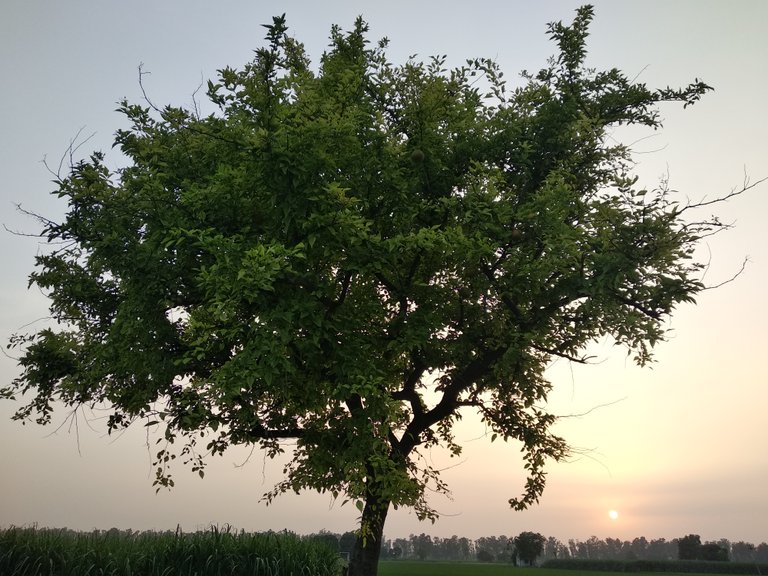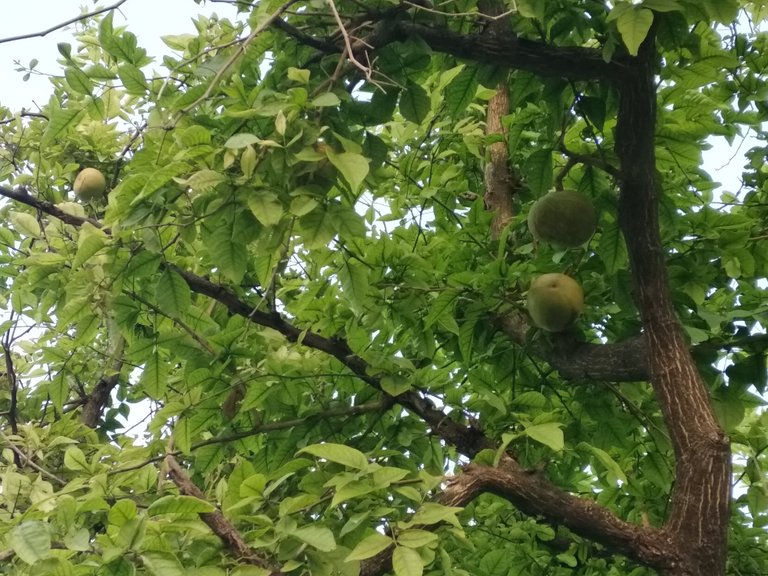
The leaf is trifoliate, alternate, each leaflet 5-14 x 2–6 cm, ovate with tapering or pointed tip and rounded base, untoothed or with shallow rounded teeth. Young leaves are pale green or pinkish, finely hairy while mature leaves are dark green and completely smooth. Each leaf has 4-12 pairs of side veins which are joined at the margin. The end leaflet features a long stalk, 0.5–3 cm while side stalks are typically shorter than 0.2 cm.[citation needed]
Flower
The flowers are 1.5 to 2 cm, pale green or yellowish, sweetly scented, bisexual, in short drooping unbranched clusters at the end of twigs and leaf axils. They usually appear with young leaves. The calyx is flat with 4(5) small teeth. The four or five petals of 6–8 mm overlap in the bud. Many stamens have short filaments and pale brown, short style anthers. The ovary is bright green with an inconspicuous disc.
Fruit
A ripe bael fruit in India
Bael fruit
The bael fruit typically has a diameter of between 5 and 12 cm. It is globose or slightly pear-shaped with a thick, hard rind and does not split upon ripening. The woody shell is smooth and green, gray until it is fully ripe when it turns yellow. Inside are 8 to 15 or 20 sections filled with aromatic orange pulp, each section with 6 (8) to 10 (15) flattened-oblong seeds each about 1 cm long, bearing woolly hairs and each enclosed in a sac of adhesive, transparent mucilage that solidifies on drying. The exact number of seeds varies in different publications.

It takes about 11 months to ripen on the tree and can reach the size of a large grapefruit or pomelo, and some are even larger. The shell is so hard it must be cracked with a hammer or machete. The fibrous yellow pulp is very aromatic. It has been described as tasting of marmalade and smelling of roses. Boning (2006) indicates that the flavor is "sweet, aromatic and pleasant, although tangy and slightly astringent in some varieties. It resembles a marmalade made, in part, with citrus and, in part, with tamarind."[11] Numerous hairy seeds are encapsulated in a slimy mucilage.
https://en.wikipedia.org/wiki/Aegle_marmelos
Please give me a follow and I will give you a follow in return and possible future votes!
Thank you in advance!✅ @jpdattana24, I gave you an upvote on your post!
Hi! I am a robot. I just upvoted you! I found similar content that readers might be interested in:
https://www.facebook.com/groups/250355258313070